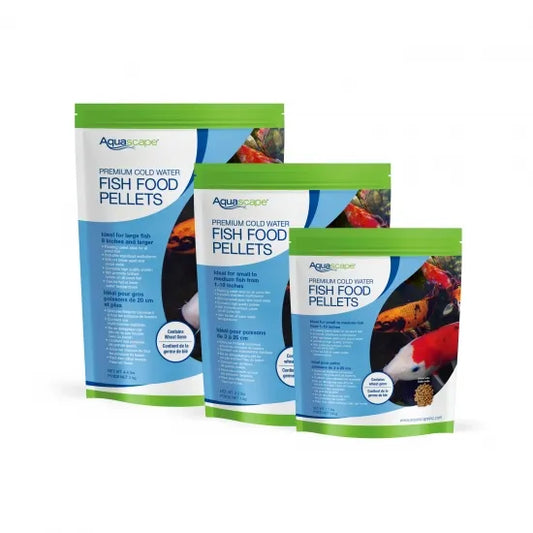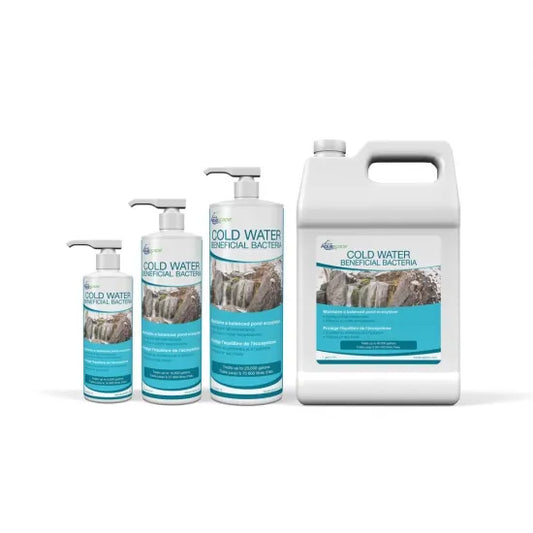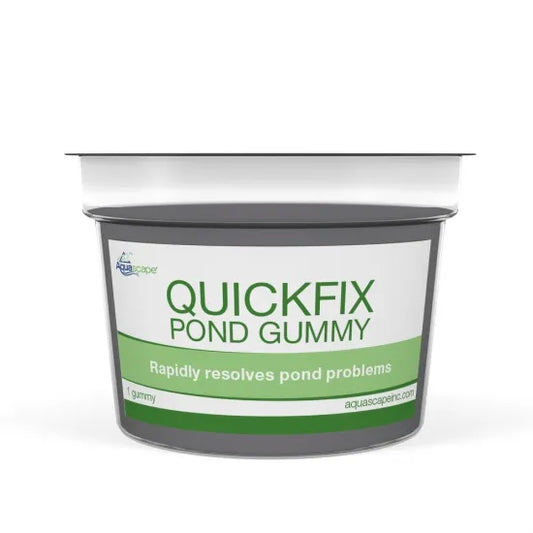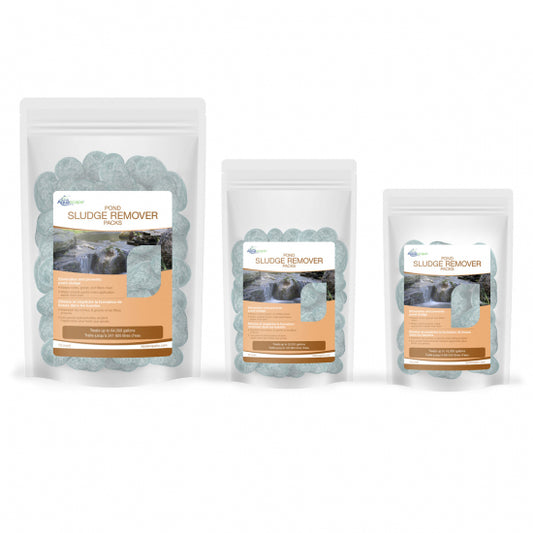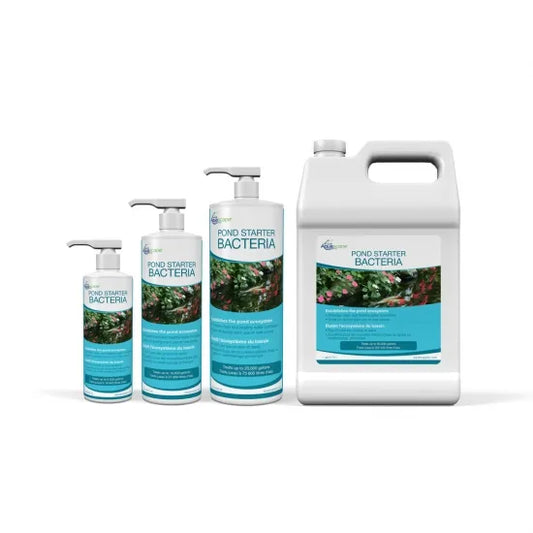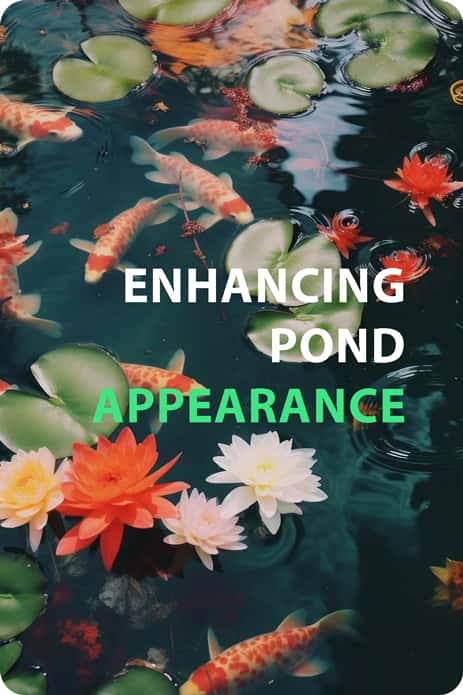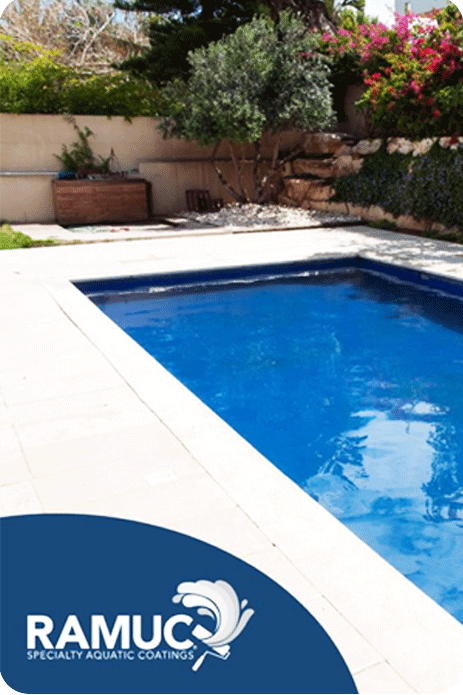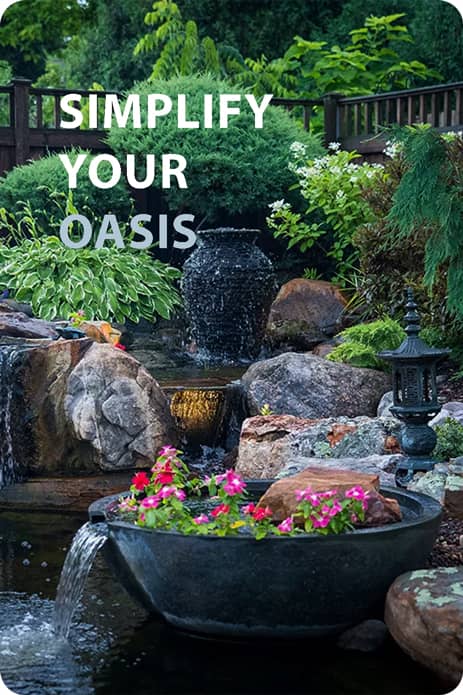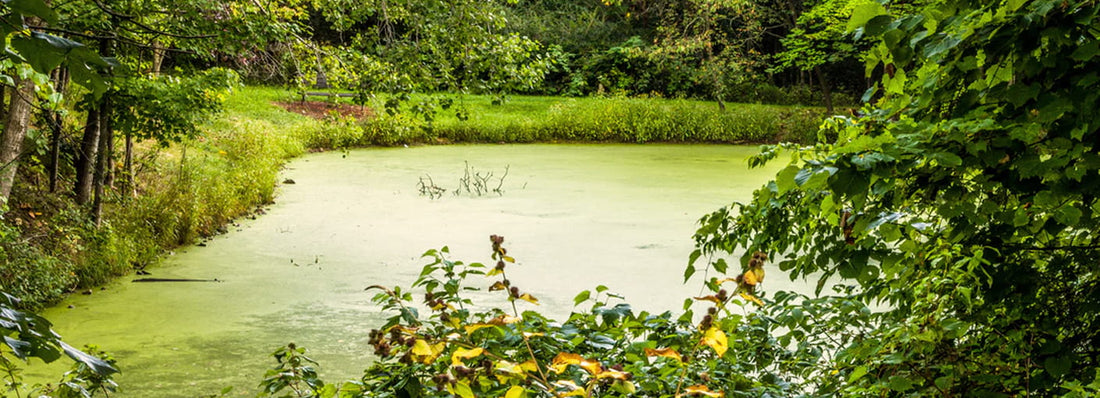
How to Clear Green Pond Water
Green pond water is caused by suspended algae, or microscopic plants known as phytoplankton. These tiny organisms multiply rapidly under the right conditions - abundant sunlight, elevated nutrients like nitrates and phosphates, and stagnant water.
While green water isn’t directly harmful to fish, it does spoil the look of your pond and signals an imbalance in the ecosystem. Left unchecked, heavy algae growth can also deplete oxygen levels, stressing or even harming your fish and other pond life.
This is one of the most common issues for Canadian pond owners. Thankfully, once you understand what’s fueling the problem and how to test for it, there are plenty of natural methods and equipment solutions to clear it up - and keep it clear for good.
Why is my pond water green?
Most guides vaguely blame “sunlight and nutrients,” which is partly true, but here’s what’s really going on in your pond:
- Too many fish or overfeeding: Excess fish waste and uneaten food add ammonia and phosphates, which algae thrive on.
- Fertilizer runoff: Lawn and garden fertilizers can wash into your pond when it rains, adding even more nutrients.
- Accumulated sludge (muck): Decaying leaves and organic debris at the bottom break down and release nutrients back into the water.
- Long hours of direct sun: The more sunlight your pond gets, the more algae can photosynthesize and grow.
Check your water parameters
Before spending money on UV clarifiers or treatments, it’s smart to test your water. Many algae problems are directly tied to unbalanced water quality. Recommended levels:
- Ammonia: 0 ppm (or <0.25 ppm short term)
- Nitrites: 0 ppm
- Nitrates: less than 40 ppm
- Phosphates: less than 0.5 ppm
You can easily test all these levels using water test kits we carry in our shop. They're essential tools for keeping your pond balanced and algae under control, and take just a few minutes to use.
- API Ammonia Test Kit - for monitoring ammonia, the most critical parameter in any pond.
- API Phosphate Test Kit - helps track phosphates that fuel algae growth.
- Microbe-Lift 5 In 1 Test Strips - quick checks for nitrites, nitrates, pH, hardness, and alkalinity.
All of these are available online in our store and ship anywhere in Canada.
| How can I remove algae and stop it from coming back? | |
|---|---|
|
The most effective method for maintaining clean and clear pond water with lasting results involves establishing a harmonious pond ecosystem. This holistic strategy naturally eliminates algae and fosters a thriving aquatic habitat, ensuring ongoing water clarity and health. Here is how to achieve this: |
|
Promoting Water CirculationEncouraging water flow is essential for averting stagnation, a condition conducive to algae proliferation. It aids in oxygen distribution, maintains balanced water temperatures, and hinders debris accumulation. Hence, we advise maintaining continuous operation of your pond pump running 24/7. Should any sections lack adequate water circulation, consider incorporating decorative fountains like spitters or a spray nozzle) to enhance movement. Alternatively, employing an Aquascape Pond Powerhead Pump is another viable option. |
|
AerationEnsuring adequate aeration is vital for sustaining optimal oxygen levels within the pond, fostering the presence of aerobic bacteria responsible for decomposing organic matter and impeding the proliferation of algae. Aeration may be accomplished through a variety of techniques, including air pumps and aeration kits, fountains, waterfalls, or surface agitation. |
|
Biological Filtration and Beneficial BacteriaBiological filters provide a habitat for beneficial bacteria to colonize and break down organic waste, including algae nutrients like ammonia and nitrites. Biological filtration systems include biofilters and filter media where bacteria can thrive. Regular application of beneficial bacteria treatment on a weekly basis stands as a pivotal component of maintaining the biological filtration necessary for the equilibrium and well-being of your pond's ecosystem. |
|
Mechanical FiltrationMechanical filters eliminate tangible debris and particles from water, including leaves, leftover fish food, and algae cells. If this debris accumulates in a pond, it decomposes, releasing nutrients that nourish algae and disrupt the pond's ecosystem. While mechanical and pressure filter systems filter out debris that sink down into the body of water, pond skimmers filter out debris from the surface of the water before it can settle down and start disintegrating. We highly advise incorporating a pond skimmer during pond construction as it effectively removes debris, safeguarding the ecosystem from potential harm. |
|
Water PlantsWater plants, of any variety, offer a habitat for beneficial bacteria and vie for nutrients alongside algae. Since algae falls under the category of water plants, the presence of more water plants in a pond reduces the available space and nutrients for algae to flourish. |
|
UV Sterilization and Ionization
UV clarifiers and ionizers can offer an effective way to tackle persistent algae issues.
UV clarifiers employ ultraviolet light to eliminate algae cells and pathogens present in the water flowing through them, thus interrupting their reproductive processes and thwarting algae blooms. While UV clarifiers excel at managing green water algae (algae that floats freely), their efficacy against string algae (attached algae) may vary. It's important to note that the ultraviolet light bulbs in UV clarifiers diminish in effectiveness over time and should therefore be replaced annually.
On the flip side, ionizers offer an efficient remedy for controlling string algae (attached algae) in ponds. These gadgets function by emitting copper ions into the water flow, disrupting the growth and reproduction of string algae. By specifically affecting the algae's cellular mechanisms, ionizers impede its capacity to flourish, ultimately decreasing algae populations. This approach proves especially beneficial for managing string algae without causing harm to other aquatic organisms when employed accurately.
Quick-Fix Algae Treatments
A few different water treatments can be used to quickly resolve algae issues in the pond. Products such as Aquascape Pond & Debris Clarifier (Liquid), Aquascape Quickfix Pond Gummy or SuperNatural SupaClear can quickly clarify pond water and restore water quality. Products such as Aquascape Rock and Fountain Cleaner, Aquascape Barley Straw Liquid Extract, Aquascape Waterfall & Rock Cleaner Professional Grade or CrystalClear Algae Off can quickly dissolve debris, including string algae, from waterfalls, streams, and rocks. It's important to note that while these treatments can provide a quick solution to clear pond water from algae, they may need to be repeated regularly to maintain the results.
